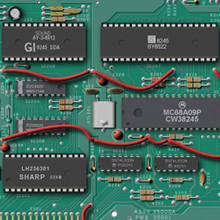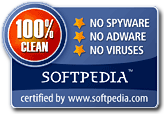Version 0.3.1 - Sound fix release
Although the sound emulation is still broken on Linux, the annoying sound bug that emitted High-Frequency garbage on the channels in some games has just been corrected, thus a new minor release has been built.
John Dondzila allowed me to include his games in the packaging, so I've added a whole bunch of new excellent entries to the list of available roms.
This version also comes with two additional display features that could come in handy if ParaJVE was to be used in arcade cabinets like environments :
As for the near future of ParaJVE's development, I'd now like to focus on the graphics rendering for a month or two. Especially, I'm currently in the process of learning GLSL (OpengGL Shading Language), in order to experiment how fragment shaders could help the emulation to become more visually attractive.
That's why, unless I find some nasty bug to fix, I do not foresee any new release anytime soon (that is, until I'm satisfied with the graphics results).
But until then, I'll keep this blog updated with the experiments :)
John Dondzila allowed me to include his games in the packaging, so I've added a whole bunch of new excellent entries to the list of available roms.
This version also comes with two additional display features that could come in handy if ParaJVE was to be used in arcade cabinets like environments :
- Full-screen mode support
In the game selector dialog, you can select a checkbox to make ParaJVE run in full-screen mode. Of course, pressing F1 (by default) still hides the menu-bar, so it's the way to go if you want each pixel of your screen to be dedicated to the vectrex graphics rendering! :)
I've made a few tests on a Linux box, and it seems that full-screen mode is not supported by the 1.5 JRE on such platforms (in such a case, the full-screen checkbox will be disabled). From what I've read here and there, it should work with a 1.6 JRE, though... - Display rotation
I've added a menu to select the current orientation of the rendering. By default it's still 0° (standard display), but you can also select 90° (left rotated), 270° (right rotated), or even 180° (top-down). I'm not sure it will of any use, but as it cost virtually nothing to implement, there it is...
of the rendering. By default it's still 0° (standard display), but you can also select 90° (left rotated), 270° (right rotated), or even 180° (top-down). I'm not sure it will of any use, but as it cost virtually nothing to implement, there it is...
As for the near future of ParaJVE's development, I'd now like to focus on the graphics rendering for a month or two. Especially, I'm currently in the process of learning GLSL (OpengGL Shading Language), in order to experiment how fragment shaders could help the emulation to become more visually attractive.
That's why, unless I find some nasty bug to fix, I do not foresee any new release anytime soon (that is, until I'm satisfied with the graphics results).
But until then, I'll keep this blog updated with the experiments :)








